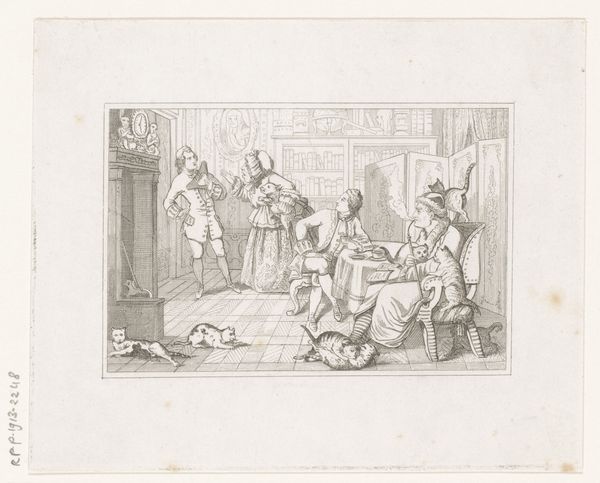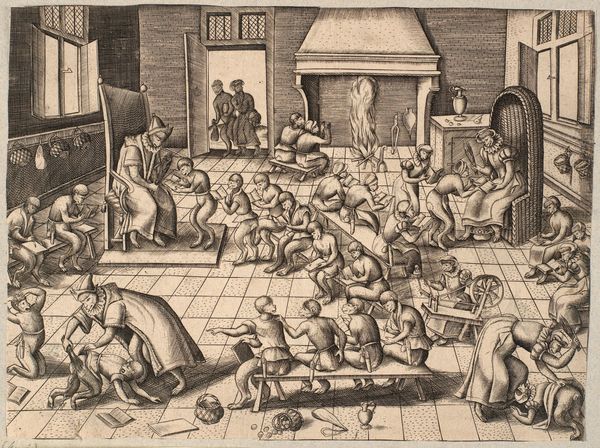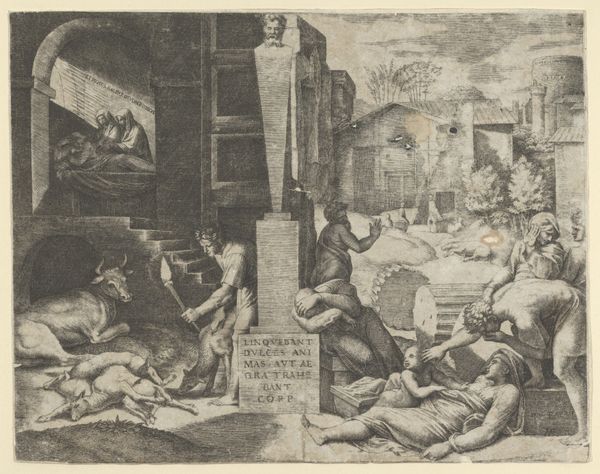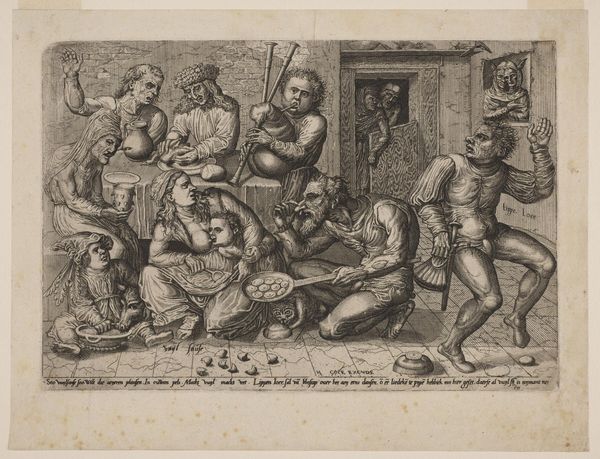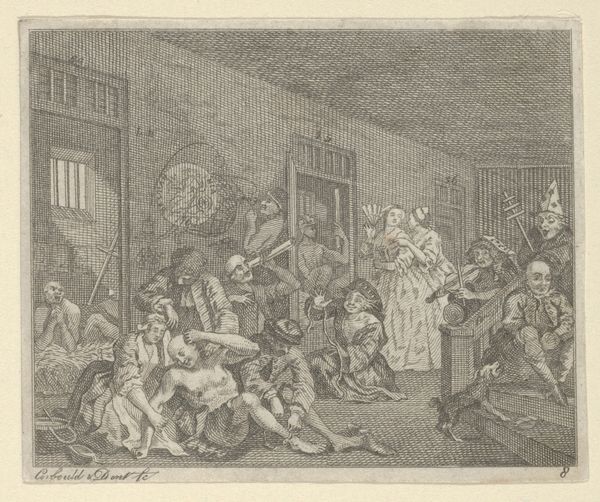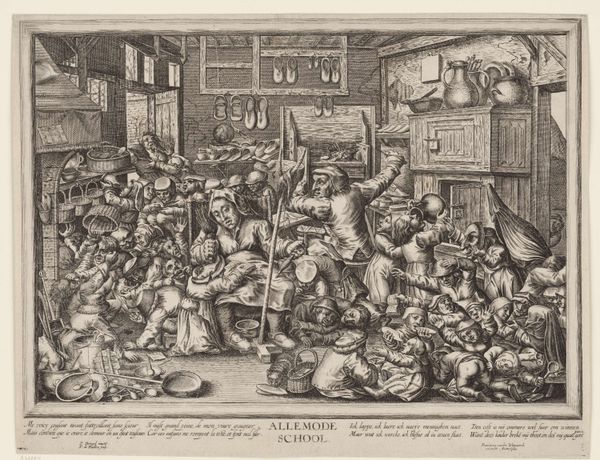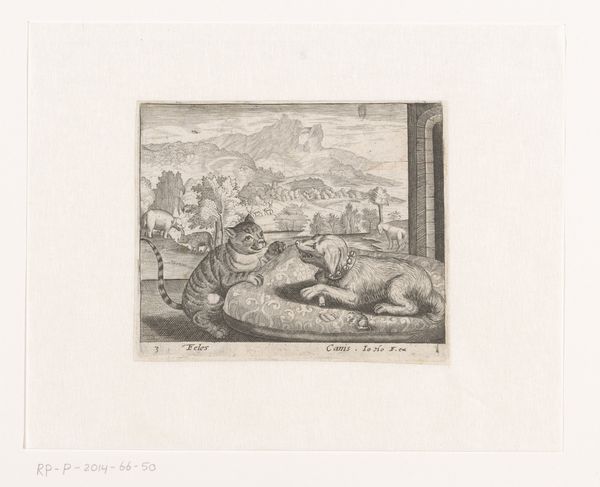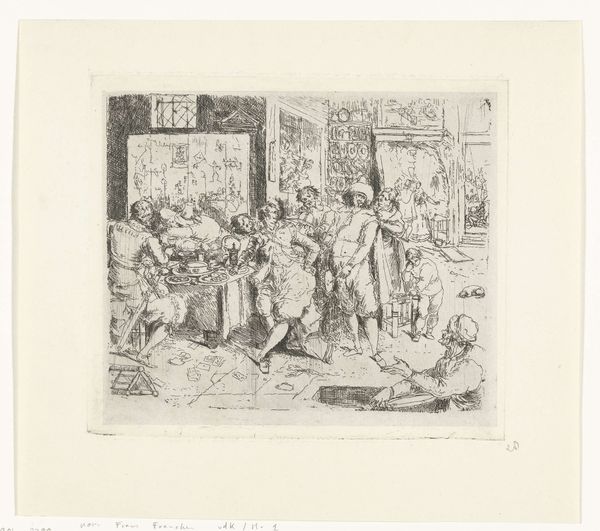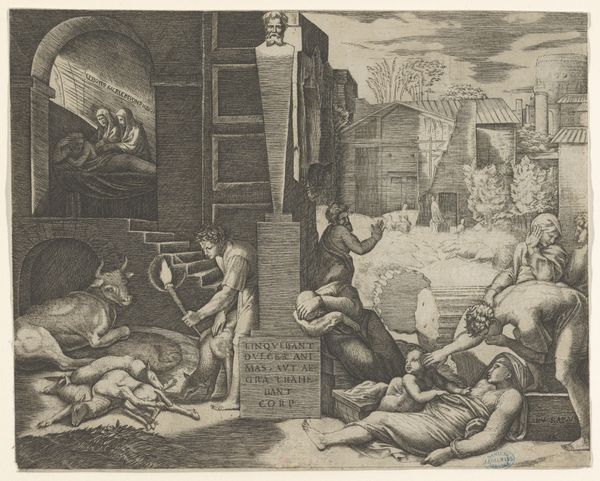
print, etching, engraving
#
narrative-art
# print
#
etching
#
caricature
#
genre-painting
#
northern-renaissance
#
engraving
Dimensions: height 233 mm, width 298 mm
Copyright: Rijks Museum: Open Domain
Curator: Welcome to the Rijksmuseum. Today, we’re looking at a fascinating etching titled "The Donkey at School". It was created sometime between 1597 and 1649 by an anonymous artist and offers a complex portrayal of a classroom scene. Editor: My initial reaction is that it's a bit chaotic. All these densely packed figures, rendered in sharp detail. The contrast between the somber instructor and the wild activities around him immediately pulls you in. What an intriguing use of the printmaking process to illustrate disorder. Curator: Absolutely. The density certainly plays a key role in conveying its message. The composition creates an almost claustrophobic atmosphere, intensifying the theme of foolishness and the futility of trying to teach those who are unwilling or unable to learn. Note how the students, though appearing human, are mocked by a donkey. The layers upon layers speak to meaning through detail. Editor: I’m curious about the etching process itself. You know, the labor, the materials. How did the artist's choices of tools influence these fine lines and the reproduction? It strikes me that the medium mirrors the message – mass-produced folly disseminated far and wide. The materiality here amplifies the work's intention, almost like pedagogical satire turned tangible. Curator: I hadn’t thought of that direct link between process and meaning. Indeed, the choice of printmaking—a replicable medium—suggests a commentary on the widespread nature of ignorance. Also, think about the donkey looking down. This creature, emblem of ignorance, occupies the place of honor typically reserved for an exemplary student. A clever, subtle dig at society's priorities. Editor: This work then also serves as commentary, no? I am especially interested in what it says about the working class. Its capacity and access to education is definitely present within that satire, isn't it? Its mass-producibility meant the art could get into many homes. The context would inform our reading, certainly. Curator: A vital point to consider, as the printmaking method makes it accessible. Focusing on how this narrative engages with themes of satire through structure makes “The Donkey at School" an engaging study of both form and ideology, and what that ultimately meant for access to art. Editor: Yes. Reflecting on this piece, I see that its endurance lies in its smart melding of materials, technique, and societal critique.
Comments
No comments
Be the first to comment and join the conversation on the ultimate creative platform.



